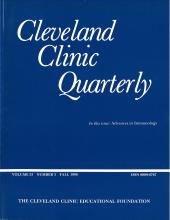ABSTRACT
Graves’ autoantibodies were measured by thyrotropin-binding inhibitory immunoglobulin assay (TBII) in 19 patients with Graves’ disease and in two patients with spontaneously resolving hyperthyroidism. T cell subsets in the peripheral blood were measured using monoclonal antibodies and flow cytometry (FACS II). The mean TBII index in patients with Graves’ disease was 59.7 ± 2.8 and 68% had a positive TBII index. A higher sensitivity of TBII was observed in 13 patients with exophthalmos (77% positive) than in six patients with hyperthyroidism alone (50% positive). The mean ratio of T helper inducer cells (OKT-4 positive) to T suppressor cytotoxic cells (OKT-8 positive) in Graves’ disease was 3.1 ± 2.0, which was significantly higher than controls (1.8 ± 0.4, p < 0.01). The increase in this ratio was primarily due to the decrease in the T suppressor cytotoxic cell population. Although there was a significant increase in mean ratio, eight patients had the ratio within normal range. Both patients with spontaneously resolving hyperthyroidism showed decreased T suppressor cell population but normal TBII levels. There was no significant correlation between T cell subsets and TBII in patients with Graves’ disease (r = 0.33). The results suggest that patients with Graves’ disease may have a numeric imbalance of immunoregulatory cells. However, this imbalance showed no significant relationship to the activity of the autoantibody.
- Received November 1985.
- Accepted February 1986.
- Copyright © 1986 The Cleveland Clinic Foundation. All Rights Reserved.






